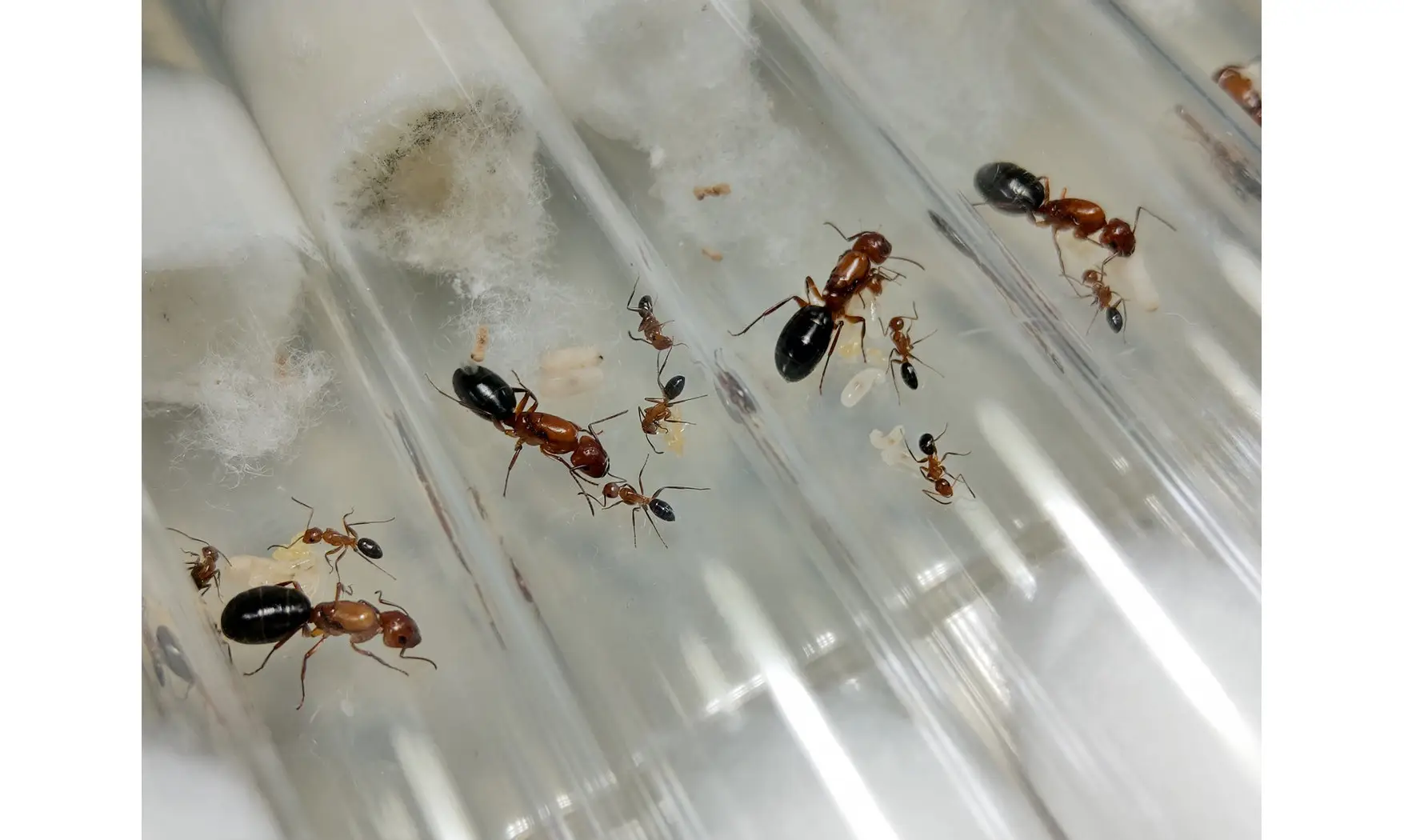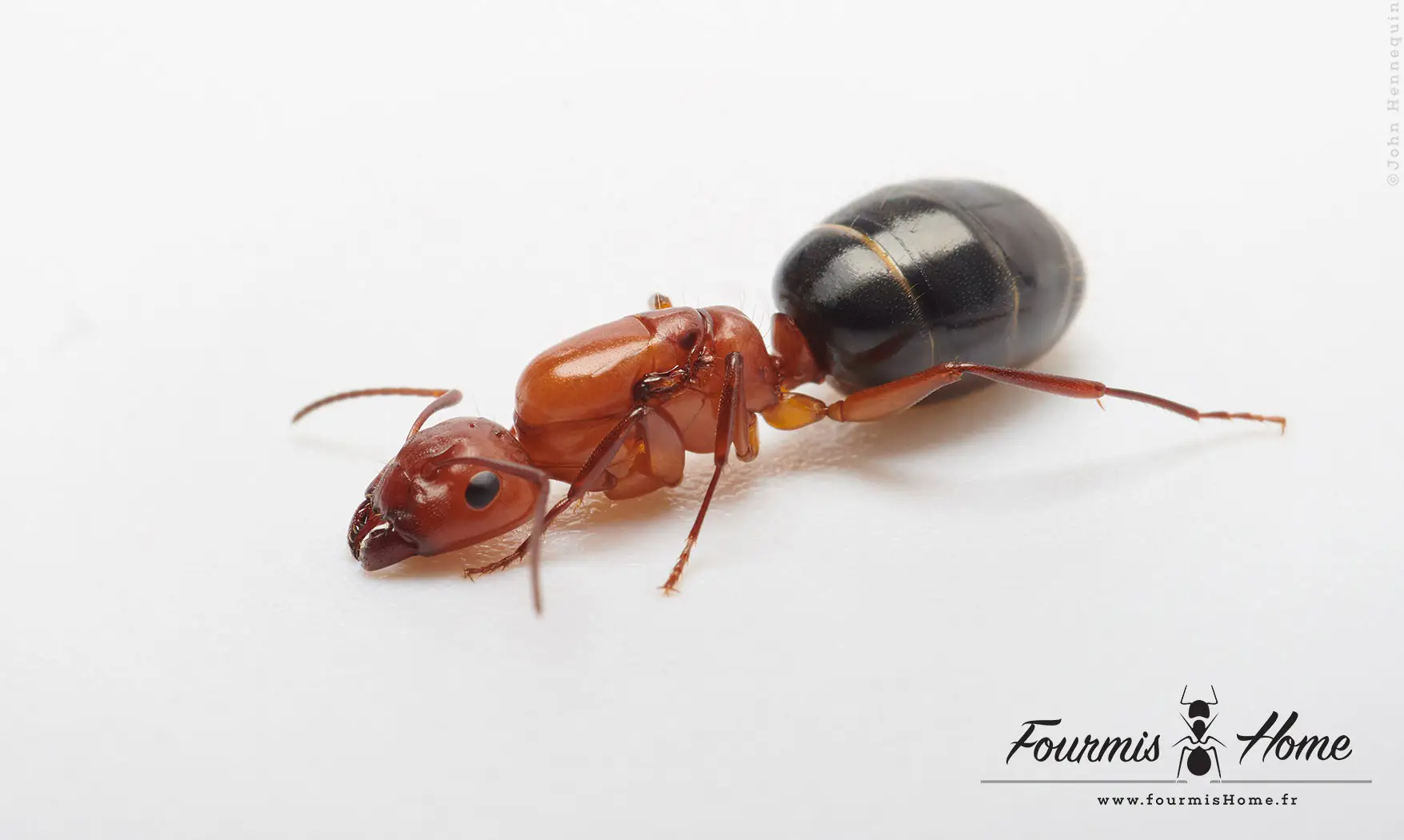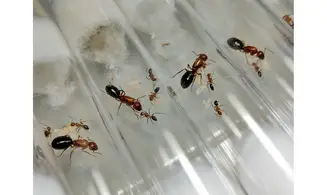



Camponotus sayi
Reference : CFOUR-085
49.90€
Available
0 in stock
Latin name: Camponotus sayi
Taxonomy: Subfamily: Formicinae, Tribe: Camponotini
Breeding level: Beginner
Geographical distribution: United States
Habitat: Prairie and Forest
Colony form: Monogyne
Queen: Size: 12 - 13mm Color: Orange-red head and thorax and shiny black gastre
Worker: Size: 4 - 7mm Color: Orange-red head and thorax and shiny black gastre
Major: Size 10 - 12mm Color: Orange red head and thorax and shiny black gastre
Male: Size: 13mm Color: Black
Food: Honeydew and insects: like flies, mealworms, mosquitoes and small crickets; also fruits.
Humidity: Hunting area: 50 - 60% Nest: 50 - 70%
Temperature: Hunting area: 20 - 32 ° C Nest: 24-28 ° C
Hibernation: Yes compulsory from November to March between 12 and 15 degrees.
Nest type: All types of nests will suit them, plexiglass, tube and reconstituted stone.
Description: Camponotus sayi is a magnificent, extremely prolific species.
Development: Swarming from June to July
Foundation: Set in a cloister (without food) Development: 30 days from egg to worker (depending on temperature)
Size of the colony: Several thousand individuals, the queen can reach the age of 15 years.
Taxonomy: Subfamily: Formicinae, Tribe: Camponotini
Breeding level: Beginner
Geographical distribution: United States
Habitat: Prairie and Forest
Colony form: Monogyne
Queen: Size: 12 - 13mm Color: Orange-red head and thorax and shiny black gastre
Worker: Size: 4 - 7mm Color: Orange-red head and thorax and shiny black gastre
Major: Size 10 - 12mm Color: Orange red head and thorax and shiny black gastre
Male: Size: 13mm Color: Black
Food: Honeydew and insects: like flies, mealworms, mosquitoes and small crickets; also fruits.
Humidity: Hunting area: 50 - 60% Nest: 50 - 70%
Temperature: Hunting area: 20 - 32 ° C Nest: 24-28 ° C
Hibernation: Yes compulsory from November to March between 12 and 15 degrees.
Nest type: All types of nests will suit them, plexiglass, tube and reconstituted stone.
Description: Camponotus sayi is a magnificent, extremely prolific species.
Development: Swarming from June to July
Foundation: Set in a cloister (without food) Development: 30 days from egg to worker (depending on temperature)
Size of the colony: Several thousand individuals, the queen can reach the age of 15 years.

